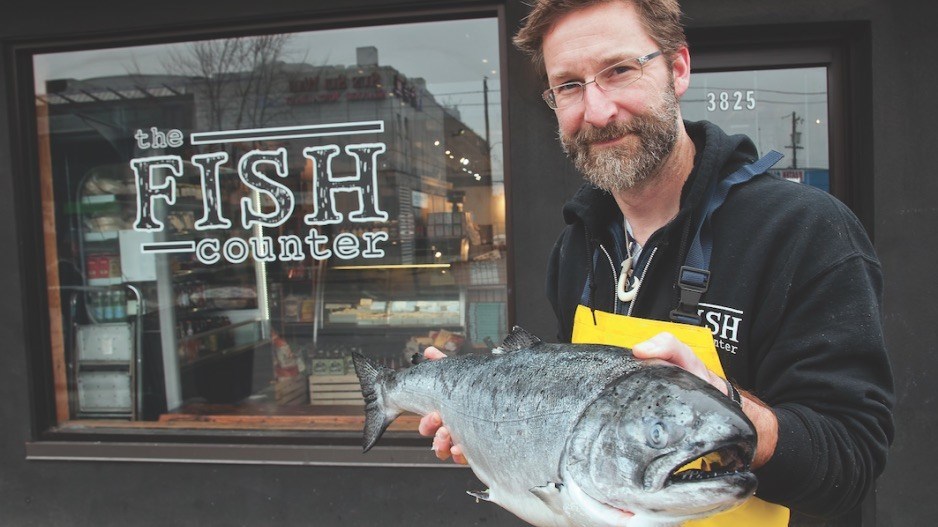Getting consumers to care about the environmental impact of their seafood choices is a huge challenge for fishermen, retailers and scientists who want to make fisheries more sustainable.
Bigger considerations for shoppers are often quality, convenience and cost, they say.
Once shoppers care about keeping seafood sustainable, however, those people can watch for logos from programs such as Ocean Wise, SeaChoice and the Marine Stewardship Council for assurance that the fish they are buying is not from an endangered species or caught in a way that destroys habitat.
They could also shop at places such as the Fish Counter on Main Street, which carries only sustainably caught fish and uses all parts of fish that are not sold directly to customers by having a secondary commissary business that makes chowders and sauces with fish tails and heads.
Another option for consumers who want to be as sustainable as possible is to become a member of community-supported fisheries such as Vancouver’s Skipper Otto’s.
That company gets members to pre-purchase a share of one of about 30 B.C. fishing families’ catches. Those catches are then labelled with information documenting when the fish was caught and on what boat. Newsletters are also sent to members with stories and photos of the fishing families to further foster a bond between the consumer and the fishing family.
For the time being, however, many fish companies can be frustrated with attempts to promote sustainability because when they try to do the right thing, they lose business to others, said Guy Dean, vice-president and chief sustainability officer at Albion Farms and Fisheries.
He recounted how Albion has partnered with industry counterparts to create Sea Pact, which helps finance fisheries improvement projects.
That approach works a lot better than a previous strategy of simply not buying unsustainably caught seafood.
“Eight years ago, we delisted eight different non-sustainable species groups that had sales in excess of $1.5 million,” he said. “That hurt.”
He believed at the time that by taking that action, Albion would influence sustainable fishing practices. Unfortunately, nothing changed, he said.
“What we didn’t buy, our competitors down the street ended up buying and they offered it to the same customers that were buying the products before,” Dean said.
“[Our] not buying the product didn’t create any positive change. It just made someone else more profitable.”
Mike McDermid, who co-owns the Fish Counter, said he regularly fields customer questions that are illuminating because they reveal a lack of knowledge, which stands in the way of consumers making fisheries as sustainable as possible.
For example, many customers ask him if fish is fresh or frozen, with the implied suggestion being that fresh is better than frozen.
Technology today is such that even smaller fishing boats can fit blast freezers aboard. That means that fish can be killed, gutted and filleted on board the ship with the fillets then flash-frozen to -60 C, he explained.
Fresh fish, in contrast, is often not as fresh when it gets to consumers, and it must travel on more environmentally burdensome modes of transportation, such as planes, as opposed to trucks or railcars for frozen foods.
Another question that McDermid repeatedly fields is whether he has a specific fish, such as haddock, because a recipe calls for it.
“Most recipes are not written by local Vancouver chefs,” he said. “They are written by chefs from halfway around the world. So when a chef says that you need haddock, they really mean pick a local, hopefully sustainably caught, mild, flaky white fish for this dish.” •




